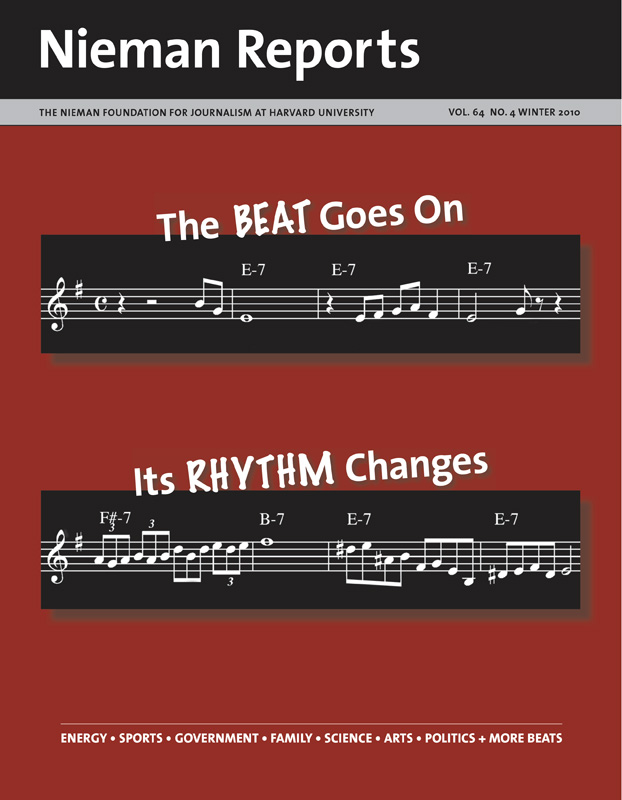Beats are the newsroom’s skeletal structure. Assigned to cover specific topics, reporters employ laser-like attention to deliver depth, dimension and context in their stories. Time translates into expertise—and after a while, the reporter is able to offer the level of judgment that an editor needs to rely on.
Now, as newsrooms shrink and blogs multiply, news and information gets absorbed in different ways by a more fragmented audience. For bloggers, the backbone of what they publish resembles the beats of older media with regular digging into a topic or tapping into what makes a locale click—creating a gaggle of expertise within an interactive community.
Economic circumstances and digital opportunities now dictate the demise of some familiar beats: Foreign bureaus have shut down, as have some bureaus in Washington, D.C. and other U.S. cities, leaving some reporters who covered federal agencies, statehouses and city halls without a beat; longtime arts critics who see their job descriptions change decide to move on, some to the Web; and as the space for science reporting shrinks in traditional media outlets, digital venues feature subdivided beats.
At this time, too, new beats emerge. At “Changing Gears,” a public media project, the future of the industrial Midwest is a collaborative beat; at the Schuster Institute for Investigative Journalism an earmarked gift supports E. Benjamin Skinner’s reporting beat on modern-day slavery; and at TBD, the “community host” job is a “beat” of social media and aggregation.
 |
| Graphic by Diane Novetsky |
In sports coverage, hometown teams—women’s teams being a lingering exception—still garner beat attention. Even so, the pace of the sports reporters’ daily grind could be the canary in journalism’s coal mine given their care and feeding of a hungry audience empowered by social media. Lindsay Jones, who covers the NFL Broncos for The Denver Post, writes that: “I don’t get much sleep. My thumbs get tired. And I’ve figured out that if I am going to half-walk, half-run to tweet breaking news, I need to wear sneakers.”
Sneakers keep her moving until exhaustion sets in. On top of regular reporting duties, the beat reporter tracks innumerable team-related blogs and Twitter feeds, tweets constantly, writes blog posts, live-blogs the game, and then files and updates stories at a pace unimagined even a few years ago. “From the time I get to the ballpark, four hours before a game, until I’m done two hours or so after, I’m writing constantly,” says Wallace Matthews, a veteran reporter who covered the New York Yankees as a beat reporter for the first time this past season with ESPNNewYork.com.
In this Winter 2010 issue of Nieman Reports, our gaze stretches from what was the beat to what it is becoming.


